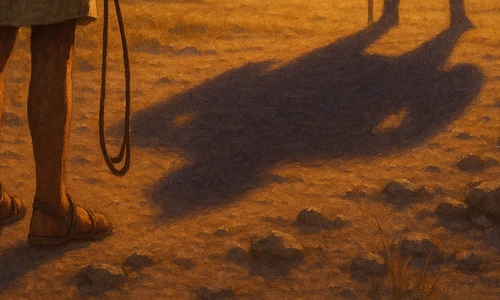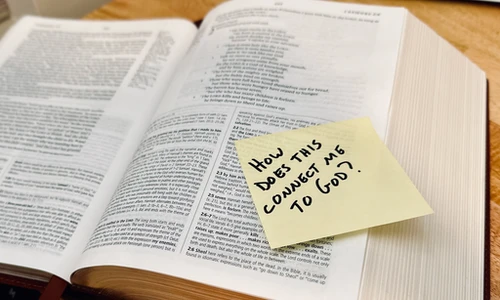Why Is Esther in the Bible?
While reading about delicious Purim pastries, a curious reader asked why, of all the women in Scripture, Esther is one of only two to get her own book. (The other, of course, is Ruth the Moabitess.)
At first, I just assumed it was because people love hamantaschen, but it turns out there are a number of important reasons. Esther is about a crisis for every living Jew, so of course it involves Israel’s old enemy, the Amalekites.
Ancient Enemies
Like many important parts of the book of Esther, the Amalekites aren’t mentioned explicitly, but any reader with deep knowledge of the Old Testament would immediately pick them out.
In Esther 3:1, we learn that Haman, the antagonist of the story, is “the son of Hammedatha the Agagite”. Hammedatha is mentioned only in Esther, but an Agagite is a son of Agag, and while Saul was king of Israel, Agag was king of… yep, Amalek.
King Saul had an opportunity to defeat Amalek once and for all, and in fact Samuel gave him a command from God to destroy every Amalekite man, woman, child, infant, ox, sheep, camel, and donkey (1 Samuel 15:1–3). But he failed, capturing King Agag instead of killing him. After lamenting Saul’s disobedience (1 Samuel 15:22–23), Samuel killed Agag himself (1 Samuel 15:32–33). Violently.
And here’s one of Agag’s descendants, more than five hundred years later, again declaring war on the Jews.
One of those Jews is Mordecai, a protagonist of the story of Esther along with Esther herself. In Esther 2:5, we learn that Mordecai is “the son of Jair, the son of Shimei, the son of Kish, a Benjamite.” You may be tempted to skip that verse, especially because the Old Testament already has so many genealogies, and so many of them don’t seem to go anywhere, and the names are hard to pronounce, and we never learn their stories anyway.
But pay attention here.
Jair, like Hammedatha, doesn’t appear elsewhere in the Bible. But Shimei is mentioned in 2 Samuel 16:5–14 as a “relative of Saul”1, and Kish is mentioned in 1 Samuel 9:1–2 as Saul’s own father.
So Haman the Amalekite, the grand vizier of Persia, who is trying to kill all the Jews, finds himself in conflict with Mordecai the Benjamite, a descendant of the first king of Israel, who fought Haman’s people and won but didn’t finish the job.
A Different Theory
This theory of Mordecai’s lineage is based on the idea of telescoping genealogies, a practice common in Biblical lists of ancestors where generations are skipped to make a point. Perhaps the most famous example is Matthew 1, where Matthew counts out three sets of exactly fourteen generations between Adam and Jesus and mentions almost exclusively prominent figures from the Old Testament.
If instead Esther 2:5 is literal, and Mordecai is the great-grandson of Kish, then Kish is not Saul’s father but a man unmentioned elsewhere in Scripture who was exiled along with King Jehoiachin in 597 BC (Esther 2:6, 2 Kings 24:15). While this second explanation appears simpler, the first is more likely for three reasons.
- The author of Esther is a huge fan of structure and symbolism, and he would not have passed up an opportunity to pit Israel against Amalek one more time.
- The Kish who was Saul’s father is mentioned more than a dozen times in the Old Testament and even once in the New Testament (Acts 13:21), each time identified as the father of Saul. This hypothetical other Kish is otherwise unknown. There are other men named Kish in the Old Testament, but they do not appear to be connected to Mordecai, and they are unremarkable2.
- The presence of both Shimei and Kish provides not just one but two connections to Saul. Jair is probably Mordecai’s actual father, and the other two indicate his lineage—specifically, he’s related to Saul. (Interestingly, connecting him to Kish instead of directly to Saul makes the lineage sound more plausible: Shimei is also “from the same clan as Saul’s family,” not a direct descendant of Saul; and a fictional account would have just connected him directly to the king.)
We are left with one objection: Esther 2:6 says that someone was exiled with King Jehoiachin, which happened in 597 BC. It can’t be Mordecai, because that would make Mordecai more than a hundred years old. It might be Kish, although having only three generations in a hundred years is unlikely. Either way, the specificity of verse 6 appears to identify Jair, Shimei, and Kish as recent relatives, not ancient ancestors.
Unless the Hebrew is just too concise, and what it means is that this family, or clan, was one of those exiled with King Jehoiachin, and that’s why Mordecai is in Susa instead of somewhere else. In fact, the ESV reads, “his family…had been exiled”, making this assumption explicit, and satisfying my curiosity.
Haman Versus Mordecai
Throughout the story, the author contrasts Haman and Mordecai quite directly, setting up Israel (represented by Mordecai) as the good guys and Amalek (represented by Haman) as the bad guys.
Feasting Versus Fasting
After Haman convinces Ahasuerus to send out the decree to exterminate the Jews, the two men drink in celebration (Esther 3:15), a terrifying response to proclaiming a genocide.
Mordecai, when he hears of it, immediately tears his clothes and begins a loud and public lament (Esther 4:1). He presumably fasted with the rest of the Jews of the empire (Esther 4:3).
Murder Versus Faith
Haman’s response to the growing conflict between himself and Mordecai is to erect a ridiculous seventy-five-foot-tall gallows (Esther 5:14); imagining killing his enemy makes him very happy.
Mordecai, on the receiving end of a carefully planned and officially sanctioned genocide, somehow reveals absolute faith, saying, “If you [Esther] keep quiet…deliverance and relief for the Jews will arise from some other place” (Esther 4:14).
Arrogance and Ambition Versus Humility and Loyalty
When Ahasuerus has his all-important sleepless night during which he learns that Mordecai had saved his life from assassins (Esther 6:1), he asks Haman how to honor a man who pleases the king. Haman, assuming Ahasuerus means him, suggests Ahasuerus dress him as the king, put him on the king’s horse, and parade him through the city. He’s the grand vizier, “the most powerful official in the empire” (Esther 3:1), but he still envisions being king.
Mordecai has already shown his loyalty to the king, having saved him from the assassins despite his oppression of the Jews and even the issuance of the fateful decree. He asked for nothing for his service.
So Haman, who asked for everything, receives nothing and even has to guide Mordecai’s horse through the city. And Mordecai, who asked for nothing, receives honors befitting a king.
The (Real) End of the Amalekites
Haman is a very late Amalekite, living around the 470s BC. He is the last gasp of the Amalekites’ millennium-long attempt to destroy Israel, starting way back when Israel first left Egypt (Numbers 24:20). When Mordecai and Esther, together, first humiliate and then defeat him, the Amalekites are finally defeated as God promised in Exodus 17:14, commanded in 1 Samuel 15:3, and finally accomplished here in Esther.
With the Amalekites’ final defeat, Israel, despite being exiled in a strange land, gets one step closer to that covenant rest that God promised Moses in Exodus 33:14 and appeared to accomplish with Joshua (Joshua 21:44). When the author of Hebrews brings up the rest promised to Joshua as an foreshadowing of the salvation brought by Jesus (Hebrews 4:8), the Christian reader should remember Mordecai and Esther and this epic down payment, a thousand years in the making, toward fulfilling that promise.
And that’s one reason Esther gets her own book.
-
And therefore an enemy of David. Shimei runs alongside David’s caravan as he flees Jerusalem from his own son, Absalom, cursing him and throwing rocks at him. David is surprisingly serene about it. ↩
-
Well, as unremarkable as you can be for being mentioned by name in the twice-inspired Word of God. ↩



